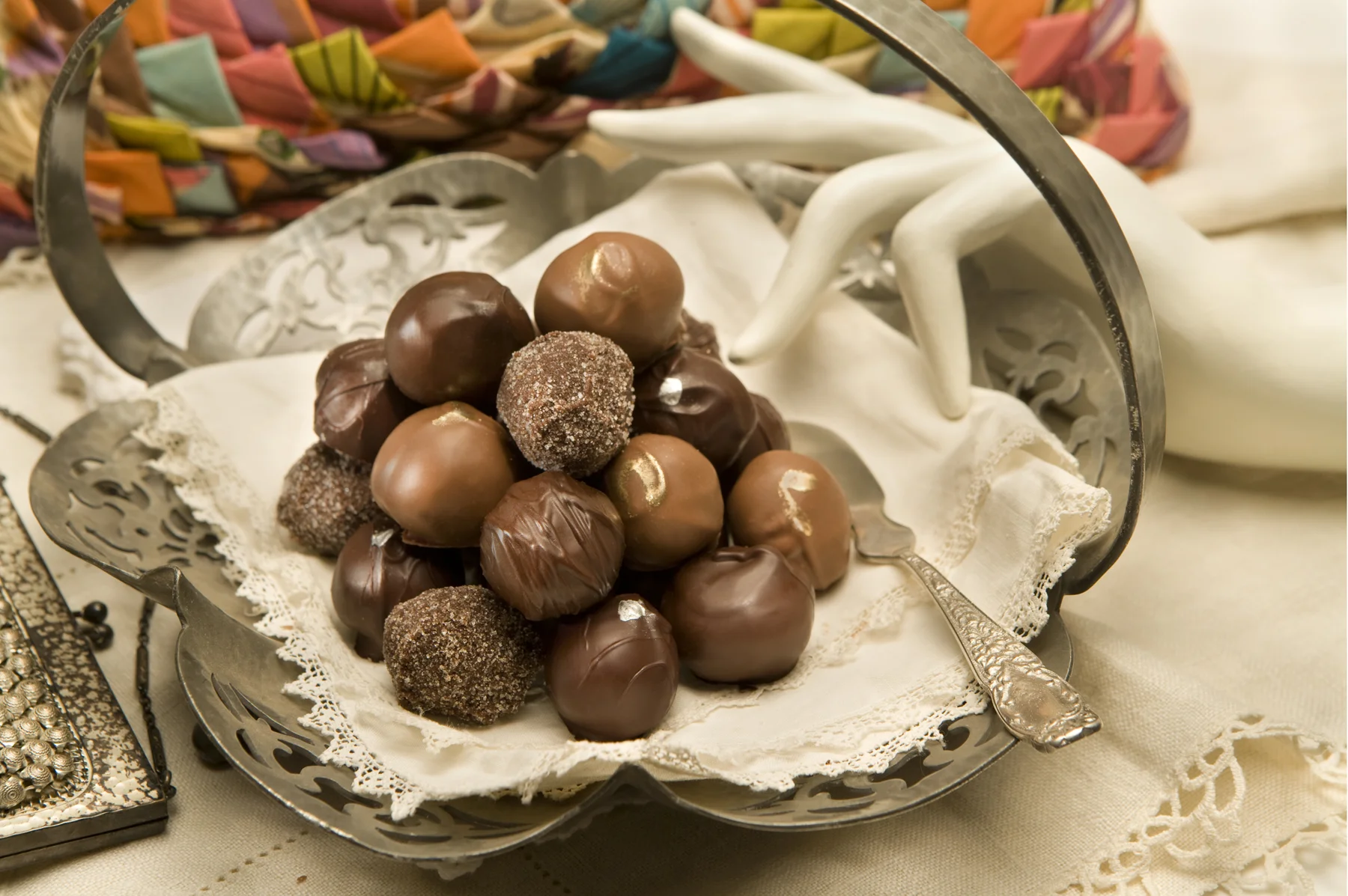What Benefits Does Single-Origin Chocolate Offer?
Chocolate is more than a sweet indulgence; it’s an experience shaped by geography, craftsmanship, and sustainability. In recent years, single-origin chocolate benefits have become a popular topic among chocolate lovers, chefs, and ethical consumers alike. Single-origin chocolate, as the name suggests, is crafted from cacao beans sourced from a specific region, plantation, or even a single farm. This distinction makes it unlike conventional chocolate blends that mix beans from multiple regions. The result? A richer story in every bite, one that celebrates terroir, supports local growers, and invites chocolate enthusiasts to taste the world in nuanced ways.
Below, we’ll explore what makes single-origin chocolate special, from its complex flavor profiles to its positive impact on farming communities and the environment.
Key Single-Origin Chocolate Benefits Explained
Single-origin chocolate isn’t just about exclusivity; it’s about purity of flavor and purpose. By using cacao from one specific location, chocolatiers preserve the bean’s natural essence. This creates a chocolate that reflects its environment; the soil, climate, and local farming practices all leave an imprint on taste and texture.
Unlike mass-market blends, single-origin bars offer a transparent chain of production. This traceability appeals to those who value knowing where their food comes from and how it’s made. It also enables stronger relationships between producers and consumers, connecting chocolate lovers to the people and places behind their favorite treats.
Another key benefit is quality. Because the beans aren’t mixed with others of lower grade, single-origin chocolate tends to be of higher caliber. Artisanal chocolatiers can focus on small-batch production, ensuring optimal roasting, grinding, and tempering to highlight each bean’s best characteristics. This approach enhances not only the chocolate’s flavor but also its overall integrity.
Beyond taste and craftsmanship, there’s a story of empowerment. By emphasizing regional identity, single-origin chocolate encourages equitable trade practices, sustainable cultivation, and community development. Each purchase can directly support farmers striving to improve their livelihoods and protect their ecosystems.
Flavor Profiles Across Chocolate-Growing Regions
The beauty of single-origin chocolate lies in its diversity of taste. Just as wine reflects the terroir of its vineyard, chocolate expresses the essence of its region. Different climates, altitudes, and soil compositions yield beans with distinct flavor notes, from bright and fruity to deep and earthy. Understanding these regional differences adds depth to the tasting experience and reveals the artistry behind chocolate-making.
Tasting Notes Unique to Single-Origin Chocolate
Each chocolate-growing region brings its own personality to the table. Here are some general flavor tendencies that highlight the variety found across the globe:
South America
Often considered the cradle of cacao, South American regions such as Ecuador, Peru, and Venezuela produce some of the world’s most complex chocolates. Ecuadorian cacao, particularly the renowned Arriba Nacional variety, is famous for its floral and fruity notes with a hint of nuttiness. Peruvian chocolate often has bright citrus, red fruit, or floral undertones, reflecting the region’s high-altitude microclimates. Venezuelan cacao, especially from the Chuao and Sur del Lago areas, is celebrated for its rich, balanced flavor and smooth texture.
Central America and the Caribbean
Cacao from countries like Belize, the Dominican Republic, and Trinidad tends to feature warm, spicy, and molasses-like notes. Dominican beans are particularly known for their earthy and robust character, often layered with hints of tobacco and dried fruit. Meanwhile, Belizean chocolate can have a honeyed sweetness, perfect for those who appreciate gentle complexity.
Africa
West African nations such as Ghana and the Ivory Coast dominate global cacao production, though single-origin varieties from these areas reveal much more nuance than mass-market chocolates suggest. Ghanaian cacao, for instance, is known for its deep cocoa flavor with subtle nutty tones. Madagascar stands out for its bright, tangy fruit notes, often reminiscent of raspberry or citrus, a favorite among craft chocolatiers.
Asia and the Pacific
Regions like Indonesia, the Philippines, and Papua New Guinea are gaining recognition for their distinctive profiles. Indonesian cacao typically carries earthy, woody, and slightly smoky notes, while Papua New Guinean varieties often offer tropical fruitiness with hints of spice. These origins provide a sensory adventure for those eager to explore lesser-known cacao regions.
When sampling single-origin chocolate, it’s worth taking time to let each piece melt slowly on your tongue. This allows the flavors to unfold gradually, revealing layers of aroma and texture that tell the story of their homeland.
Ethical and Environmental Advantages of Single-Origin
While flavor and craftsmanship are major draws, the ethical and environmental benefits of single-origin chocolate are equally significant. The global chocolate industry has long faced challenges such as unfair labor practices, deforestation, and low farmer wages. Choosing single-origin chocolate can be a meaningful way to support more responsible production systems.
Single-origin sourcing encourages transparency, enabling consumers to trace the chocolate back to its source. This traceability fosters accountability throughout the supply chain, rewarding ethical farming methods and discouraging exploitation. Many single-origin producers engage in direct trade or work closely with cooperatives, ensuring that farmers receive fair compensation and long-term support.
Traceability and Farmer Partnerships
One of the most important aspects of single-origin chocolate is the connection between makers and growers. In conventional supply chains, cacao often changes hands multiple times before reaching chocolatiers, leaving farmers underpaid and invisible. Single-origin production disrupts this pattern by establishing direct relationships between farmers and chocolate makers.
These partnerships go beyond transactions; they build trust and community. When chocolatiers know exactly where their beans come from, they can invest in the success of those farmers. This might mean providing technical training, funding fermentation facilities, or supporting reforestation efforts. In return, farmers gain the stability and resources needed to focus on quality over quantity.
Traceability also benefits consumers, offering insight into the story behind their chocolate. Labels that specify origin, variety, and even the farmer’s name invite greater appreciation and connection. Instead of anonymous commodities, single-origin bars become personal expressions of craftsmanship and care.
From an environmental standpoint, single-origin chocolate encourages sustainable agricultural practices. Many small-scale producers use agroforestry methods that integrate cacao trees with other crops and native plants. This not only supports biodiversity but also improves soil health and helps mitigate climate change by capturing carbon.
How to Store Single-Origin Bars for Peak Flavor
Once you’ve chosen your favorite single-origin chocolate, proper storage ensures you enjoy it at its best. Unlike mass-produced candy bars, high-quality chocolate is sensitive to temperature, light, and humidity. Follow these guidelines to maintain peak flavor and texture:
Keep it cool, but not cold.
Chocolate is best stored between 60°F and 70°F in a dry, dark place. Avoid the refrigerator, as condensation can cause sugar bloom (a white, powdery film) and alter the flavor. If your environment is warm, seal the chocolate tightly in an airtight container before refrigerating, and allow it to return to room temperature before opening.
Avoid strong odors.
Chocolate absorbs smells easily. Store it away from aromatic foods such as coffee, spices, or onions.
Protect from light and air.
Exposure to sunlight or oxygen can degrade chocolate’s delicate flavors. Wrap bars in foil or airtight packaging to preserve freshness.
Enjoy mindfully.
Once unwrapped, savor your single-origin chocolate within a few weeks for the fullest flavor experience. Each origin’s distinct profile can fade over time, especially if exposed to varying conditions.
Exploring the Cultural Significance of Single-Origin Chocolate
Beyond taste and ethics, single-origin chocolate embodies cultural heritage. Cacao has been cultivated for thousands of years, particularly in Latin America, where it held sacred status among ancient civilizations like the Maya and Aztec. Modern single-origin production honors that legacy by maintaining regional traditions and celebrating local craftsmanship.
Artisanal chocolatiers often work with indigenous or smallholder farmers who use traditional fermentation and drying techniques. These methods are vital to unlocking cacao’s unique flavor potential and preserving cultural knowledge that might otherwise be lost to industrialization.
Moreover, single-origin chocolate invites consumers to participate in this cultural exchange. Each bar becomes a passport to another part of the world, a sensory journey through the landscapes and people who make it possible.
The Science Behind Single-Origin Flavor Complexity
The distinctive flavor of single-origin chocolate doesn’t happen by accident. It’s the result of complex biochemical interactions influenced by genetics, fermentation, and terroir.
Cacao Variety:
The type of cacao tree, such as Criollo, Forastero, or Trinitario, plays a major role in flavor development. Criollo beans, often grown in Central and South America, produce delicate, aromatic chocolates with subtle fruit and floral notes. Forastero beans, common in Africa, yield robust, full-bodied flavors. Trinitario, a hybrid of the two, offers a harmonious balance.
Fermentation:
After harvest, cacao beans are fermented in wooden boxes or baskets, allowing natural yeasts and bacteria to transform sugars into flavorful compounds. The length and method of fermentation can drastically change the chocolate’s character.
Roasting:
Roasting brings out the bean’s signature aromas. Single-origin chocolatiers fine-tune this process to highlight regional nuances, light roasting preserves fruity brightness, while darker roasts enhance deep cocoa tones.
Together, these elements create the complexity that defines single-origin chocolate, making it a favorite among connoisseurs and curious newcomers alike.
Why Consumers Are Turning to Single-Origin Chocolate
As awareness grows about ethical sourcing and sustainability, more consumers are choosing single-origin chocolate for both taste and conscience. This shift mirrors broader trends in coffee, wine, and tea, industries where transparency and terroir have become markers of quality.
People want to know the story behind what they eat. Single-origin chocolate offers exactly that: a tangible link between the consumer and the source. Every bar purchased supports a more equitable and environmentally responsible system while rewarding craftsmanship over mass production.
Moreover, single-origin chocolate enhances culinary creativity. Chefs and home bakers alike use it to elevate desserts, pair with wines, or even feature in savory dishes. Each origin’s distinct flavor can transform a simple recipe into something extraordinary.
Supporting the Future of Chocolate
The future of chocolate depends on conscious choices made today. Climate change, deforestation, and market instability threaten cacao production worldwide. Supporting single-origin chocolate is one way to help safeguard the industry’s future.
By valuing transparency, quality, and sustainability, consumers encourage more producers to adopt ethical practices. In turn, this strengthens local economies, promotes biodiversity, and ensures that cacao remains a viable crop for generations to come.
Experience the Difference with Wiseman House Chocolates
Single-origin chocolate offers far more than delicious flavor. It represents integrity, artistry, and connection, a bridge between growers, makers, and chocolate lovers everywhere. From the distinct terroirs that shape its flavor to the ethical partnerships that sustain its production, each bar tells a meaningful story.
Whether you’re a seasoned chocolate enthusiast or simply curious about expanding your palate, exploring single-origin varieties is a rewarding journey. You’ll not only taste the world in every bite but also contribute to a more sustainable and transparent chocolate industry.
At Wiseman House Chocolates, we believe in celebrating chocolate as both an art and an experience. Our handcrafted creations are made with the finest ingredients and a deep respect for tradition. If you’re ready to discover chocolate that’s perfect for any occasion, shop online today. Indulge in the difference that care, craftsmanship, and quality make, one exquisite bar at a time.

